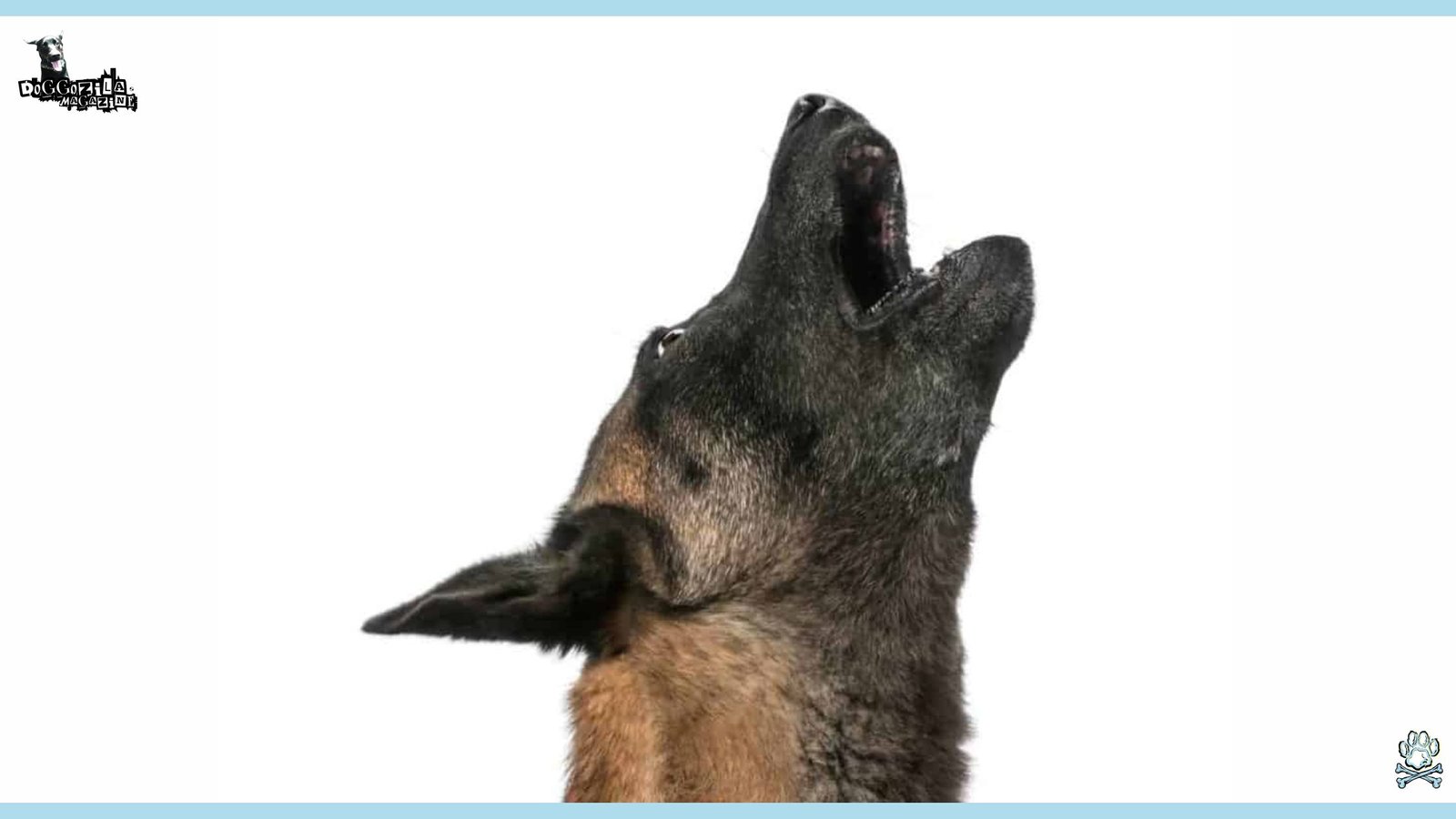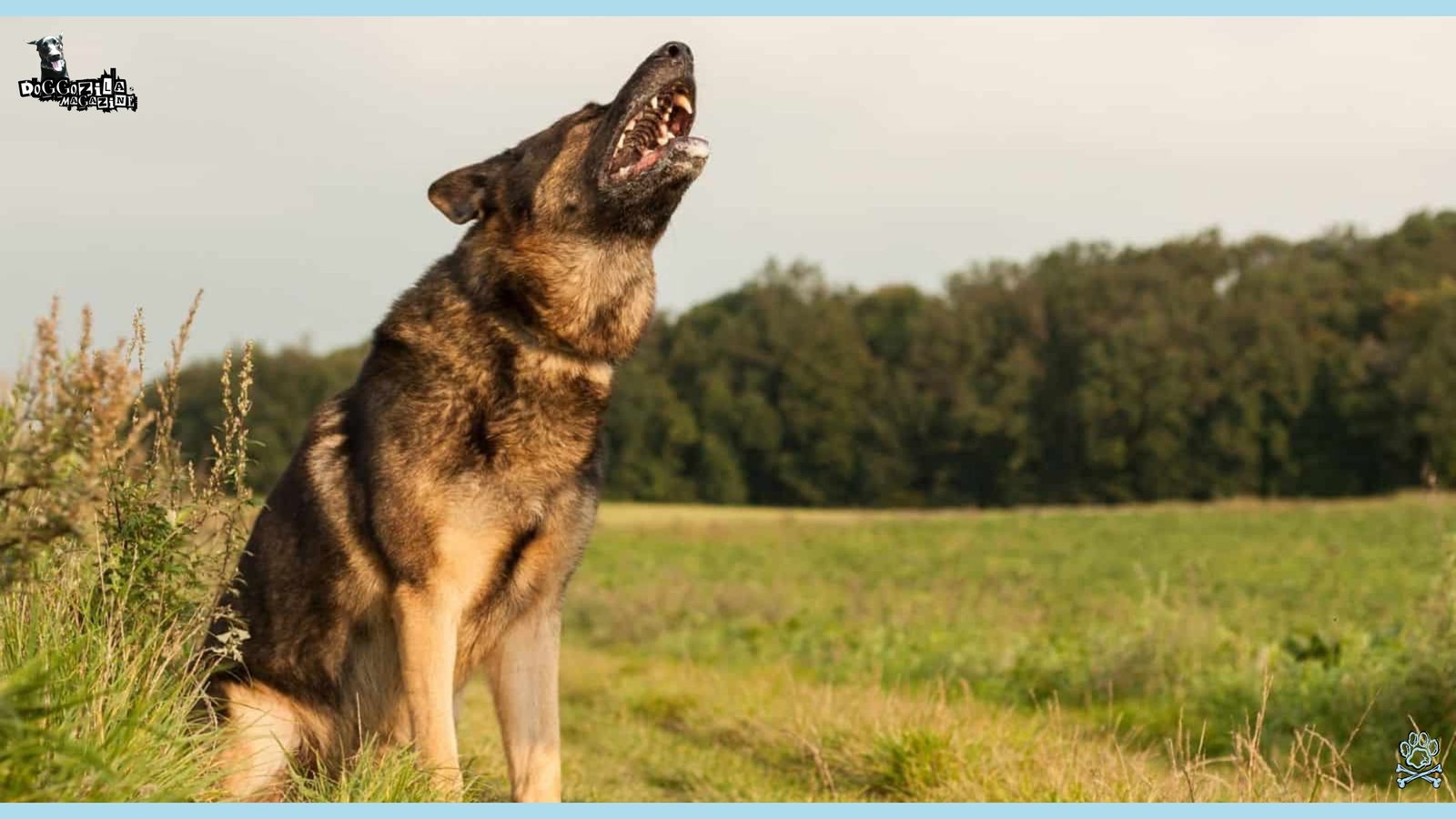For centuries, tales have persisted of animals behaving strangely before a catastrophic event. From dogs refusing to go outside before an earthquake to pets acting anxious hours before a storm hits, these anecdotes are compelling. But is there any truth to them? As dog owners, we’ve all witnessed our pets do things that seem inexplicable, leaving us to wonder about the hidden depths of their perception. This article dives into the fascinating question: can dogs sense natural disasters? We’ll explore the cutting-edge science, the historical accounts, and the biological superpowers that might just make your furry friend a four-legged early warning system.

THE UNCANNY ANECDOTES ABOUT HOW DOGS CAN SENSE NATURAL DISASTERS BEFORE HAPPENING
Long before modern technology, humans looked to animal behavior for signs of impending danger. The historical record is filled with stories that suggest can dogs sense natural disasters long before we can. Perhaps the most famous example is from 1975 in Haicheng, China, where officials reportedly ordered an evacuation based partly on the unusual restlessness of animals, including dogs, just before a major 7.3 magnitude earthquake struck.
Countless pet owners have shared similar, albeit smaller-scale, stories of their dogs whining, hiding, or trying to flee an area minutes before the ground shakes or a tornado forms. These consistent reports across different cultures and eras form the bedrock of this mystery. They suggest a pattern that science is now striving to understand, moving beyond folklore and into the realm of empirical study.
Personal Accounts from Owners Who Believe Their Dog Saved Them
Many owners have harrowing tales of their dogs acting in ways that defied normal explanation, ultimately leading to safety. One family credits their normally calm Labrador for suddenly barking incessantly and herding them into the basement mere minutes before a tornado obliterated their home.
Another owner recalls her dog refusing to go for its usual morning walk along the beach, a behavior so out of character that it kept them indoors during the devastating 2004 Indian Ocean tsunami. These stories often share common threads about anxiety, whining, barking, and attempts to guide family members to a specific, often safer, location.
While individual stories aren’t scientific proof, the sheer volume of similar experiences adds significant weight to the argument that can dogs sense natural disasters is a question worth serious investigation.
Historical Evidence of Animal Behavior Preceding Earthquakes
The idea that animals can predict quakes is not new, it dates back to ancient Greece. The historian Thucydides wrote of animals like rats and snakes fleeing the city of Helice before it was destroyed by an earthquake in 373 BC. In more modern times, a study of unusual animal behavior preceding earthquakes found reports spanning over 130 species.
Dogs feature prominently in these accounts, often showing signs of intense anxiety and agitation. This long historical timeline indicates that this phenomenon is a consistent, observable pattern rather than a series of coincidences.
It was this historical precedence that prompted governments, including China and Japan, to initially fund research into animal behavior as a form of earthquake prediction.
Separating Coincidence from Genuine Premonition About Dogs That Can Sense Natural Disasters
For every compelling story, a skeptic will rightly ask, was it truly a premonition, or just a coincidence? Critics argue that animals exhibit strange behaviors for many reasons like illness, hunger, or reacting to a subtle human cue, that are later misinterpreted in hindsight after a disaster occurs.
Confirmation bias plays a role, where we remember the hits and forget the misses. We vividly recall the one time the dog acted weird before a quake but forget the ten times they acted weird and nothing happened.
The scientific challenge is to move beyond isolated anecdotes and gather concrete, measurable data under controlled conditions to definitively answer can dogs sense natural disasters or if we are simply connecting unrelated dots after the fact.
🔑 Key Points: Historical records and countless owner testimonials suggest a persistent pattern of dogs acting strangely before disasters, forming the foundation for scientific inquiry into this phenomenon.

WHAT RESEARCH TELLS US ABOUT DOGS THAT CAN SENSE NATURAL DISASTERS?
The scientific community has taken a keen interest in these anecdotes, leading to formal studies aimed at proving or debunking this canine sixth sense. Researchers are exploring several theories, primarily focusing on a dog’s ability to detect subtle environmental changes that precede a disaster. These changes are imperceptible to humans but are like blaring sirens to a dog’s heightened senses.
Studies have moved from simple observation to complex data collection, using everything from owner-reported surveys to sensors that measure a dog’s vital signs and activity levels. The goal is to find a reliable, measurable correlation between specific dog behaviors and specific geophysical events, turning mystery into measurable fact.
Groundbreaking Studies That Ask Can Dogs Sense Natural Disasters
One of the most cited studies collected over 1,000 reports of unusual animal behavior preceding 160 earthquakes. The researchers concluded that the evidence was strong enough to suggest that animals, including dogs, can detect a distinct environmental precursor to seismic events.
Another project, led by a NASA scientist, theorizes that rocks under extreme stress before an earthquake release charged ions into the air, a phenomenon that could affect animal behavior.
Researchers are now using advanced technology like the “Animal Disaster Alert System,” which fits dogs with activity monitors to see if their restlessness can be quantified and used as part of an early warning network, providing hard data for the question of can dogs sense natural disasters.
The “Canine Seismic Sense” Project and Its Findings
Initiatives like the “Canine Seismic Sense” project aim to collect big data on dog behavior. They enlist thousands of pet owners to log their dog’s daily activity and mood into an app, creating a massive database. This data is then cross-referenced with geological activity reports from the USGS.
The preliminary idea is to identify consistent behavioral spikes like increased barking or pacing that occur in a specific geographic area in the hours before a quake. While still in its early stages, this crowdsourced approach could provide the large-scale statistical evidence needed to move the theory from compelling to conclusive, offering a modern answer to an ancient question.
Why the Scientific Community Remains Cautiously Optimistic About Dogs That Can Sense Natural Disasters Before They Occur?
Most scientists agree that the anecdotal evidence is too widespread to be ignored. However, the community remains cautious about proclaiming dogs as reliable predictors. The main challenges are reproducibility and the sheer number of variables involved. Not all dogs react the same way, and not all earthquakes produce the same precursor signals.
The scientific method requires consistent, repeatable results under controlled conditions, which is incredibly difficult with large-scale natural events. Therefore, while researchers are optimistic about the link, they stress that we are still far from using dog behavior as a standalone forecasting tool, but it could be a valuable part of a larger integrated system.
🔑 Key Points: Formal studies are moving beyond anecdotes, using data from owner reports and activity monitors to find a measurable correlation between dog behavior and geophysical events.

THE DOG SUPERPOWERS: THE BIOLOGY BEHIND THE FEELING
To understand how can dogs sense natural disasters might be possible, we need to appreciate the incredible biological sensors that dogs possess. Their perception of the world is fundamentally different from ours, built on senses that are far more acute and capable of detecting stimuli we cannot.
A dog’s world is a rich tapestry of smells, sounds, and vibrations that are completely hidden from human perception. It is these heightened senses that likely allow them to detect the faint early warning signs of an impending disaster, acting as a living, breathing detection device for changes in their environment that we are utterly oblivious to.
The Incredible Power of a Dog’s Nose to Detect Chemical Changes
A dog’s sense of smell is their most superpower-like trait, with up to 300 million olfactory receptors compared to our mere 6 million. This allows them to detect concentrations of odors nearly 100 million times lower than humans can. Before an earthquake, geological pressures can release gases and subtle chemical changes from the ground, such as radon gas or ozone.
It is highly plausible that dogs can smell these minute changes in the air or groundwater long before we can measure them with instruments. This olfactory advantage is a leading theory for how can dogs sense natural disasters, they are quite literally smelling the Earth’s stress.
Hearing the Unheard: Detecting Infrasound and High Frequencies
A dog’s hearing is another key asset. They can hear frequencies up to 65,000 Hz, far beyond the human range of 20,000 Hz. More importantly, they can also hear low-frequency sounds called infrasound, which are produced by storms, volcanic eruptions, and earthquakes.
These rumbles travel great distances and are often the first acoustic signals of a major event. While we feel nothing, a dog might hear the low-frequency grumble of a distant tornado or the shifting of tectonic plates deep underground, causing them to become anxious or fearful long before the danger arrives.
Feeling the Vibration: Sensitivity to P-Waves and Micro-Tremors
Dogs are also highly sensitive to vibrations through their paws. Earthquakes generate two types of waves, primary waves (P-waves) and secondary waves (S-waves). The faster, weaker P-waves arrive first and are often undetectable to humans, but they might be felt by animals.
A dog, feeling these subtle micro-tremors through the ground seconds before the more destructive S-waves hit, would have just enough time to react with fear or confusion. This sensitivity to vibration could explain why dogs often seem to get a few precious seconds of warning, providing a physical mechanism for the phenomenon of can dogs sense natural disasters.
🔑 Key Points: Dogs’ heightened senses of smell, hearing, and touch provide a biological basis for their ability to detect subtle environmental changes, like gases and infrasound, that precede disasters.

BEYOND EARTHQUAKES: SENSING STORMS, TSUNAMIS, AND MORE
While earthquakes get the most attention, a dog’s predictive abilities aren’t limited to the ground shaking. There is significant evidence that suggests can dogs sense natural disasters of all kinds, including atmospheric and oceanic events. Their ability to detect changes in barometric pressure, humidity, and static electricity makes them excellent forecasters for weather-related disasters.
From a dog’s perspective, the world is constantly buzzing with data, and they are adept at picking up on the specific data points that signal a major shift in weather patterns or geological activity, making them versatile, if unpredictable, sensors.
How Dogs Detect Changes in Barometric Pressure Before Storms Explain That They Can Sense Natural Disasters?
A dog’s body is a sensitive barometer. They can feel the physical discomfort caused by rapid drops in barometric pressure that occur before a severe thunderstorm or hurricane. This change can cause pressure in their inner ears, which they may respond to by whining, pacing, or seeking shelter.
Furthermore, their keen hearing can detect the low-frequency rumble of thunder that is still miles away, far beyond the range of human hearing. This combination of feeling and hearing the approach of a storm long before we see it or hear it is a clear example of their advanced warning system in action.
Related Article Recommendation: Can Dogs Sense Death? Scientific Insights, Real Stories and Myths
The Role of Static Electricity in Predicting Volcanic Activity
Volcanic eruptions are preceded by immense geological stress and the release of gases and ash. Researchers theorize that the friction from rock movement and ash particles in the air can create significant static electrical charges. Humans might not notice, but a dog’s fur is highly sensitive to this buildup of static electricity.
This could cause an unusual prickling sensation on their skin, leading to behaviors like nervous scratching, shaking, or attempting to flee the area. This sensitivity to electrostatic changes offers a plausible explanation for why animals have been observed fleeing volcanic regions before a major eruption.
Dogs Can Sense the Unseen Before Happening: How Their Alerts to Impending Tsunamis Save Many People Before Natural Disasters?
A tsunami is preceded by the rapid retreat of ocean water and the release of tremendous energy from an undersea earthquake. The theory is that dogs, with their ability to hear infrasound, might detect the massive energy release of the seismic event that triggers the tsunami.
Furthermore, they may sense the resulting vibrations traveling through the ground long before the wave arrives. There are numerous survivor accounts from the 2004 tsunami stating that animals, including dogs, fled to higher ground in the minutes before the wave hit, suggesting they sensed the invisible threat approaching.
🔑 Key Points: A dog’s predictive ability isn’t limited to earthquakes, they can also detect the atmospheric pressure changes before storms and the infrasound from distant tornadoes or volcanic activity.

INTERPRETING HOW DOGS CAN SENSE NATURAL DISASTERS: WHAT DOES “ANXIOUS” REALLY MEAN?
If your dog is acting anxious, it’s a safe bet that it’s not because they’ve predicted the apocalypse. The challenge for owners is learning to differentiate between everyday anxiety and behavior that could be a genuine warning. Common signs of a potential alert include prolonged, intense, and unusual behaviors that are out of character for your pet.
The key is knowing your dog’s baseline normal behavior so you can recognize when something is truly off. Understanding the context of their behavior is crucial before jumping to any dramatic conclusions about the question of can dogs sense natural disasters.
Common Behaviors That Might Indicate a Dog Senses Danger
While every dog is different, some common behaviors reported before disasters include prolonged and intense whining or barking for no apparent reason, attempts to hide or seek shelter in unusual places (like a closet or bathtub), clinging to owners more than usual, and agitated pacing.
Some dogs may even try to herd their family members toward a specific location or toward an exit. It’s the combination, intensity, and persistence of these behaviors that sets them apart from a dog simply reacting to a passing siren or a thunderstorm that you are also aware of.
How to Differentiate Between General Anxiety and a Genuine Alert?
The main differentiator is context and known triggers. If your dog is always anxious during loud parties or when left alone, that’s a known issue. A genuine pre-disaster alert would involve these anxious behaviors occurring in the absence of any normal trigger, on a calm, sunny day with no obvious stressors.
It’s also often a community event, if multiple dogs in your neighborhood are simultaneously acting strangely, that’s a more powerful signal than just your own pet. Paying attention to these details can help you distinguish a possible warning from routine nervousness.
Creating a Baseline for Your Dog’s “Normal” Behavior
The best way to recognize unusual behavior is to be an expert on your own dog’s normal behavior. Pay attention to how they act on a regular, calm day. What are their typical energy levels? Where do they like to nap? How do they usually greet you?
By having a solid understanding of their baseline, you will be much quicker to notice significant deviations. This doesn’t mean you should become paranoid about every whine, but rather that you’ll be better equipped to recognize a pattern of behavior that is truly out of the ordinary, which is the first step in interpreting any potential alert.
🔑 Key Points: The key to recognizing a potential alert is knowing your dog’s baseline behavior to differentiate between common anxiety and intense, unexplained agitation that occurs without a visible trigger.

PRACTICAL STEPS FOR THE PREPARED PET OWNERS BEFORE THEIR DOGS CAN SENSE NATURAL DISASTERS
Knowing that the answer to can dogs sense natural disasters is a cautious “yes,” the next logical step is to consider what we, as responsible pet owners, should do with this information. Being prepared turns a potential mystery into a manageable part of your family’s safety plan.
While we shouldn’t panic at every whimper, having a plan and knowing how to interpret our dog’s behavior can empower us. This involves creating a pet-specific emergency kit, having a clear evacuation strategy, and most importantly, learning to trust our dog’s instincts when they are acting in a consistently unusual way without explanation.
How to Responsibly React if Your Dog is Acting as an Early Warning?
If your dog begins displaying intense, unexplained anxiety, especially if it’s a behavior outside their norm, your first step should not be to dismiss it. Calmly assess the situation. Look for other environmental clues you might have missed, like a very subtle rumble or a change in the light.
Check in with your local weather and emergency alert apps on your phone. Use your dog’s behavior as a cue to become more aware of your surroundings, not as a definitive signal to panic. This calm, responsible reaction respects your dog’s potential ability while keeping you grounded in rational action.
Building a Pet Emergency Kit Based on Dog Instincts
Your dog’s potential role as an early warning system should directly inform your emergency preparedness. Your pet’s go-bag should include more than just food and a leash. It should contain items that address anxiety. Include a familiar blanket or a favorite toy that can provide immense comfort in a chaotic situation.
Consider adding an anxiety wrap or calming pheromone spray. Having these items ready allows you to quickly respond not just to the disaster, but to your dog’s stressed state, helping to keep them calm and manageable if you need to evacuate quickly based on their own warning.
Trusting Your Bond: When to Listen and When to Call the Vet?
This is a critical distinction to make. A sudden, drastic change in behavior can also be a sign of a medical issue. If your dog is suddenly anxious, hiding, or whining, it’s important to rule out pain or illness.
However, if your dog is otherwise healthy and their unusual behavior coincides with specific environmental conditions (e.g., still air before a storm, calm before an earthquake), it’s more likely to be a warning.
This is where knowing your dog’s baseline is essential. Trust the deep bond you share, you are the best person to judge whether their behavior is a medical cry for help or an environmental alert.
🔑 Key Points: You can responsibly respond to your dog’s unusual behavior by using it as a cue to check official emergency alerts and ensuring you have a pet-specific emergency kit ready.

THE ETHICAL QUESTION: SHOULD WE RELY ON THIS ABILITY THAT DOGS CAN SENSE NATURAL DISASTERS?
The idea of using dogs as a primary warning system raises important ethical considerations. While it’s fascinating to consider, placing the responsibility for human safety on the innate, and unpredictable instincts of animals is a complex issue. We must ask ourselves if it is fair to expect our pets to be our guardians in this way.
The goal should be to appreciate their abilities as a fascinating part of the natural world and a potential secondary alert, while still relying on technology and official emergency services as our primary source of life-saving information.
The Dangers of Misinterpreting Dog Behavior in Crisis
Relying solely on a dog’s behavior could lead to dangerous false alarms or, worse, missed warnings. If we expect every anxious behavior to signal a disaster, we risk becoming desensitized or causing unnecessary panic.
Furthermore, not all dogs will react the same way, a dog that doesn’t react shouldn’t be assumed to mean there is no danger. This potential for human error in interpretation means that canine alerts should never replace official warnings. They can be a valuable personal cue to be more alert, but they are not a standalone system.
Related Article Recommendation: Search and Rescue Dogs: Meet The Furry Heroes!
Balancing Technology with Animal Instinct for Community Safety
The most ethical and effective approach is a balanced one. Technology like seismographs and Doppler radar provides the reliable, objective data that is essential for large-scale public warnings. Animal behavior, including that of dogs, can serve as a complementary, grassroots-level data point.
In the future, community-based reporting apps could aggregate observations of unusual animal behavior, and if a significant cluster is reported in a specific area, it could help authorities confirm data from their sensors, potentially adding valuable seconds to a warning time.
Respecting the Dog’s Role: Companion First, Predictor Second
Above all, we must remember that our dogs are our companions and family members. Their primary role is not to serve as emergency sensors. Placing that expectation on them is unfair. We should celebrate and be amazed by their incredible abilities, but our responsibility is to care for their well-being, not to exploit their instincts for our benefit.
The most important thing we can do is to be prepared to protect them when disaster strikes, ensuring they are included in our evacuation plans and kept safe, just as they would try to do for us.
🔑 Key Points: While fascinating, a dog’s instinct should be respected as a potential secondary alert system, not relied upon as a primary replacement for technology and official warnings.

THE VERDICT: SO, CAN DOGS SENSE NATURAL DISASTERS?
After examining the anecdotes, the science, and the biology, what is the final answer? The collective evidence strongly suggests that yes, dogs can detect certain environmental precursors to disasters that are beyond human perception. However, the crucial caveat is that they are not infallible or consistent predictors.
Their reactions are based on their sensory input, not a mystical sixth sense. So, while the answer to can dogs sense natural disasters is a cautious “yes,” the follow-up question, “can we reliably use them as a prediction tool?” receives a “not yet” from the scientific community.
Weighing the Anecdotal Evidence Against Scientific Scrutiny
The mountain of anecdotal evidence from across history and cultures is too significant to dismiss outright. It forms a compelling foundation for scientific inquiry. However, anecdotes are not data.
Science requires this evidence to be tested, measured, and reproduced under controlled conditions, which is an immense challenge with unpredictable natural events.
The current scientific stance is that the link is plausible and biologically feasible, but more rigorous data is needed to move from correlation to causation and to create a reliable model for prediction.
The Potential for an Early Warning System Involving Animals
The most promising application of this phenomenon is not relying on a single dog, but on a network of them. Researchers envision a system where data from thousands of pet trackers and citizen reports are aggregated and analyzed by AI.
A sudden, coordinated spike in anxious dog behaviors across a region could serve as a valuable secondary alert, corroborating data from seismic and meteorological instruments.
This integrated approach, combining technology with animal intuition, could provide those precious extra minutes of warning that save countless lives, finally harnessing this ancient ability for modern safety.
Embracing the Mystery While Staying Grounded in Reality
Ultimately, the possibility that our dogs can sense things we cannot deepens the bond we share with them. It encourages us to be more observant and respectful of their instincts.
While we should not live in fear or interpret every bark as a doom omen, it is wise to pay attention if our dog exhibits intense, unexplained anxiety, especially if it prompts us to check the weather radio or recall our emergency plan.
Embracing this mystery means appreciating our dogs not just as pets, but as sensitive beings connected to the world in a way we are only beginning to understand.
The collective evidence strongly suggests yes, dogs can detect certain disaster precursors, but they are not infallible predictors and should be part of a broader, prepared response plan.

Has your dog ever acted strangely before a big storm or other event? Share your stories with us, we love hearing about your extraordinary pups and remember that we will post the best ones, usually all are!









